Vuelta a Espana 2023 route: Every stage assessed for tough 78th edition of race starting in Barcelona
Starting with a team time trial in Barcelona on Saturday 29th August and concluding with 10 laps around Madrid on Sunday 17th September, the 78th edition of the Vuelta a Espana is a climber’s dream.
There are a whopping nine uphill finishes and seven high-mountain stages, including summit showdowns on the fearsome Alto de l’Angiru and the Col du Tourmalet.
One pan-flat 25km individual time trial should keep defending champion Remco Evenepoel – the newly crowned world TT champion – happy, although just four flat finishes will mean slim pickings for the sprinters.
But long gone are the days when the third Grand Tour of the year was a sprinters’ race.
Read on to see the 2023 route map and all 21 stages analysed in moderate detail…
Vuelta a Espana 2023 route map
Stage 1: Barcelona – Barcelona, 14.8km (TTT)
The only team time trial in all three Grand Tours this year takes in some of the iconic sights in the centre of Barcelona. Starting on the seafront and finishing at the base of famous Montjuic hill, the evening race of truth features 18 corners, some long straights, two roundabouts and one little chicane. It’s not overly technical and, at under 15km in length, should not bring about too many time losses. Last year’s opening TTT was won by Jumbo-Visma with Robert Gesink taking the red jersey in front of his home crowds in Utrecht.
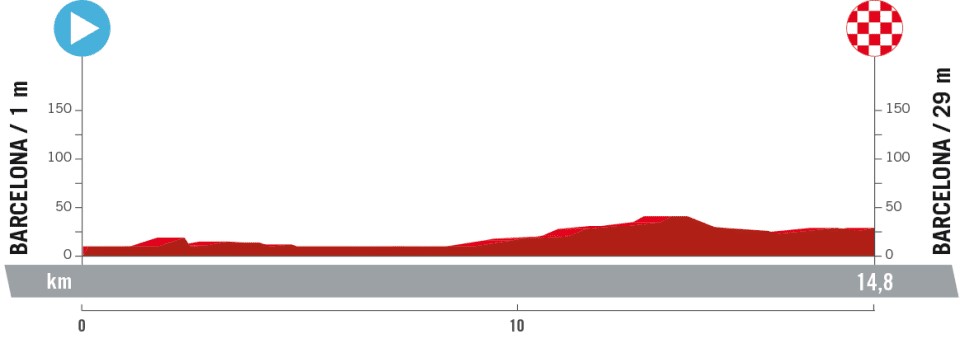
Stage 2: Mataro – Barcelona, 182km (hilly)
Despite two early climbs and some lumpy roads, this stage should end in a reduced bunch sprint. Whether any of the pure sprinters can be involved will depend on how the riders tackle the iconic Montjuic climb, a short but punchy affair which peaks at 9.4% and comes just a few kilometres from the finish. With bonus seconds (3, 2, 1) available over the climb as well as at the finish (10, 6, 4), we could even see the GC riders come to the fore.

Stage 3: Suria – Arinsal Andorra, 158.5km (summit)
Any time gains from the TTT could pale into insignificance once the race hits the high mountains in Andorra just two days later. A potentially pivotal stage culminates with the Coll de Ordino (17.3km at 7.7%) and then the first summit finish of La Vuelta at the ski resort of Arinsal after an ascent of 8.3km at a peppery 7.7%.
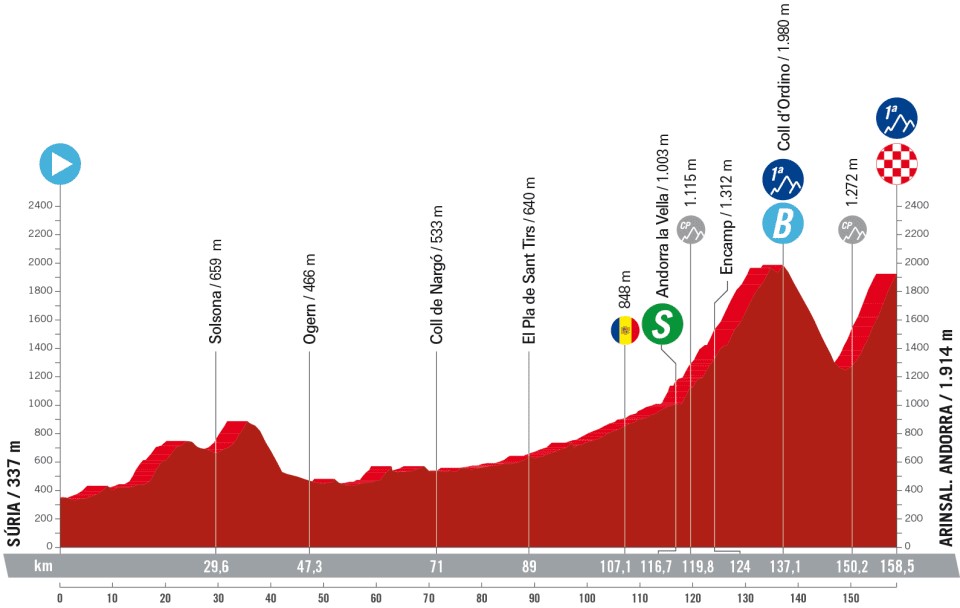
Stage 4: Andorra la Vella – Tarragona, 185km (hilly/sprint)
Two gentle third-category climbs in the final 65km could spice things up and play into the hands of a breakaway. But provided the sprint teams play their cards right, a bunch finish in Tarragona should be on the cards. Italy’s Matteo Trentin last won when La Vuelta came to Tarragona back in 2017.
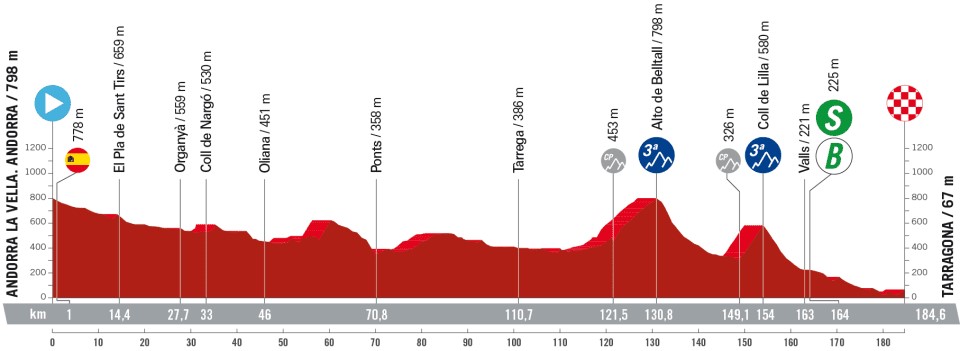
Stage 5: Morella – Burriana, 186.5km (hilly/sprint)
Another potential day for the sprinters sees the riders start at 900m above sea level in the scenic hilltop town of Morella before gradually dropping – via a series of uncategorised climbs in the province of Castellon – towards the Costa del Sol. One Cat.2 test could throw a spanner in the works – although the Collada de Ibola climb averages just 3.9% over 11.4% and so should not prove too much of a test ahead of a flat finish beside the beach at Burriana, a town renowned for its oranges.

Stage 6: La Vall d’Uixo – Pico del Buitre, 183,5km (summit)
Spanish veteran Angel Madrazo will have fine memories of the climb to the Observatorio Astrofisico de Javalambre, where he led home a superb Burgos BH one-two ahead of Dutch team-mate Jetse Bol in 2019. Before a return to the Cat.1 Pico del Buitre (10.9km at 8%), the riders will tackle the Cat.3 Puerto de Arenillas (5.8km at 4.7%) and, as in 2019, the Cat.3 Alto Fuente de Rubielos (6.1km at 6.2%). With almost 4,000m of climbing and persistent 15% pitches on the final climb, this could prove to be the toughest stage of the opening week.
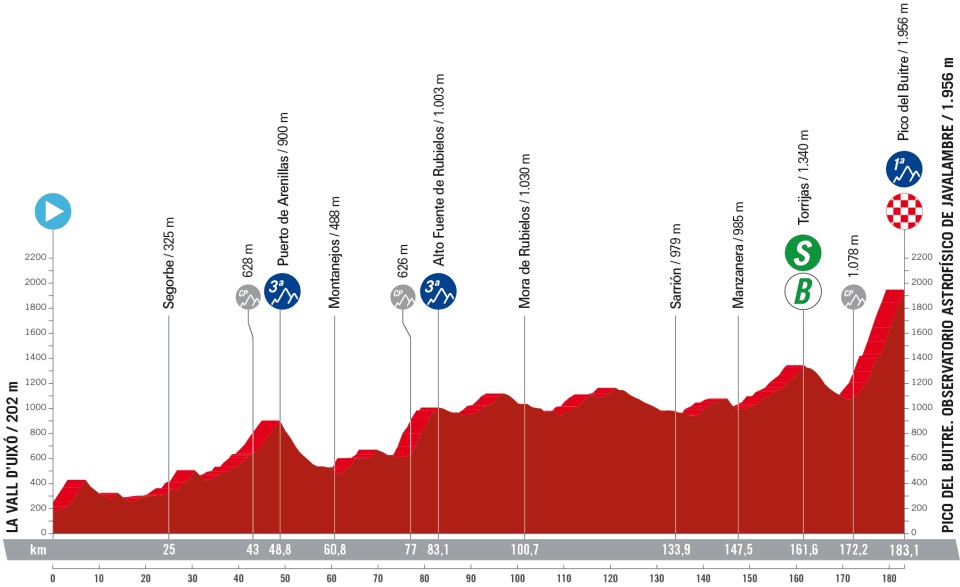
Stage 7: Utiel – Oliva, 201km (flat)
The longest stage so far, the opening half sees the road gradually drop down from the hills around Utiel via a series of leg-sapping ledges. The final 90km are virtually pan-flat with a bunch sprint all but guaranteed in the Valencian seaside town of Oliva, renowned for its blue flagged beaches and sand dunes.

Stage 8: Denia – Xorret de Cati, 165km (mountains)
This undulating schlep through the Costa Blanca interior features five categorised climbs, with the summit of the Cat.1 Xorret de Cati (3.9km at 11.4%) coming just four kilometres from the finish. Peaking at 22%, the climb was last used in 2017 when Frenchman Julian Alaphilippe took the spoils after edging clear of Jan Polanc and Rafal Majka on the fast, technical descent.
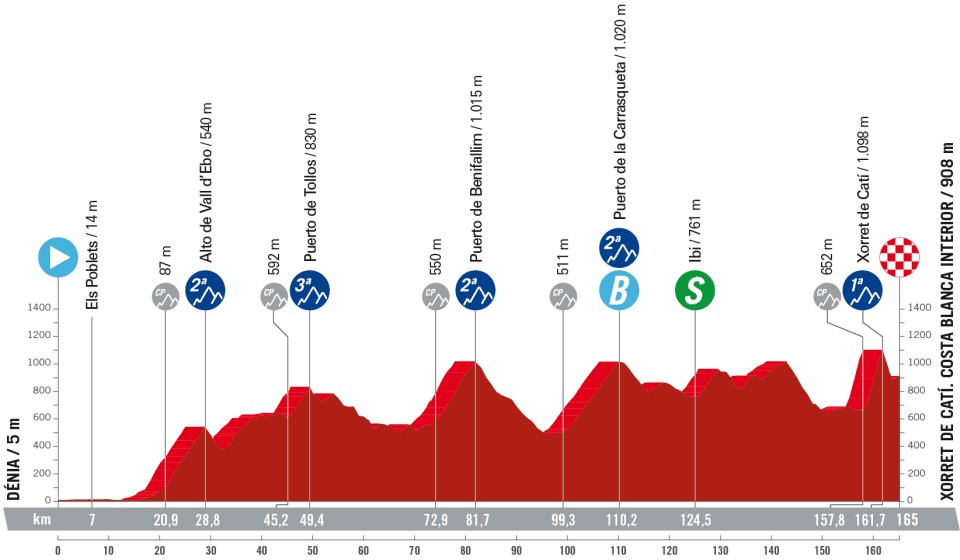
Stage 9: Catagena – Collado de la Cruz de Caravaca, 184.5km (summit)
After a start in the historic Murcian port of Cartagena, the riders travel inland via the Cat.1 Puerto Casas de la Marina la Perdiz (11.5km at 4.9%). The roads then go up down all the way to the foot of the final climb, the Cat.2 Alto Caravaca de la Cruz (8.2km at 5.5%), where a series of steps punctuated by double-digit ramps will make it hard to find a rhythm. That said, the nature of the climbs today means Stage 9 has breakaway written all over it.
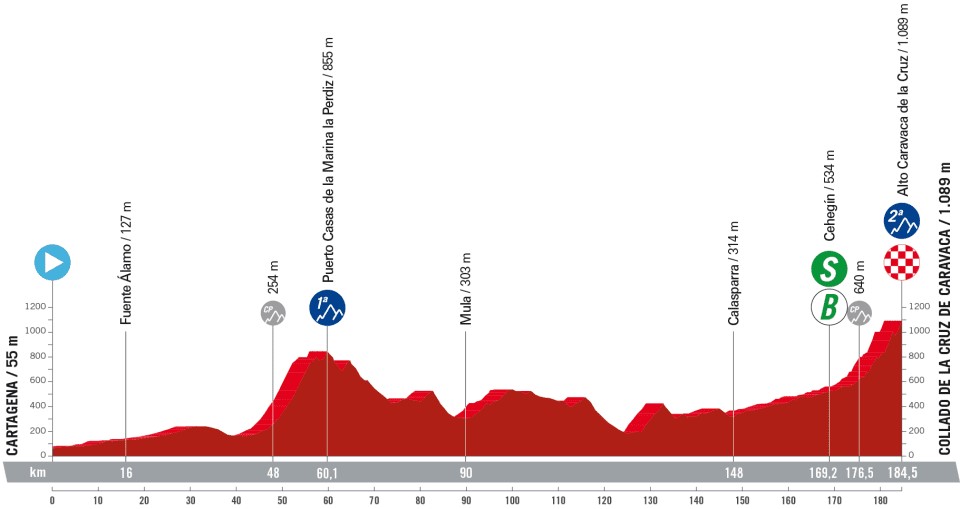
Stage 10: Valladolid – Valladolid – 25.8km ITT
The first major GC summit meeting may take place on a stage without any summits to speak of – on the Tuesday after the first rest day. A largely flat 25.8km race against the clock in the city where Christopher Columbus died will make all non-specialists suffer. Wide, flat roads, with just the one gentle climb in the opening 7km, means this TT will suit defending champion Remco Evenepoel too a tee, with the Belgian able to display his rainbow bands as world TT champion (provided he’s not already in a red skin suit).
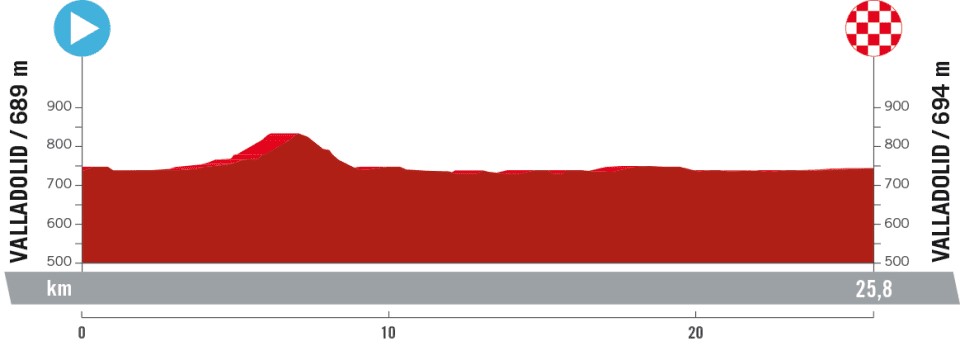
Stage 11: Lerma – La Laguna Negra, 163.5km (flat/uphill finish)
A long and flat and potentially sweltering day in the saddle with a sting in the tail. The Cat.1 La Laguna Negra climb rises for 6.5km from the town of Vinuesa at an average gradient of 6.8% with the steeper 13% ramps coming near the finish. The climb was first used in Stage 3 of the 2020 Vuelta when Ireland’s Dan Martin pipped Primoz Roglic and Richard Carapaz for the win. The right breakaway stands an excellent chance of going the distance here.

Stage 12: Olvega – Zaragoza, 151km (flat/sprint)
Don’t be deceived by the profile, which gives the impression that this is hillier than it is. With just 888 vertical metres on the menu, the gradients today are negligible and, in a race with few opportunities for the fast men, this will surely produce a bunch sprint in the historic streets of Zaragoza. The fifth largest city in Spain is being visited by the Vuelta for the first time in 15 years.
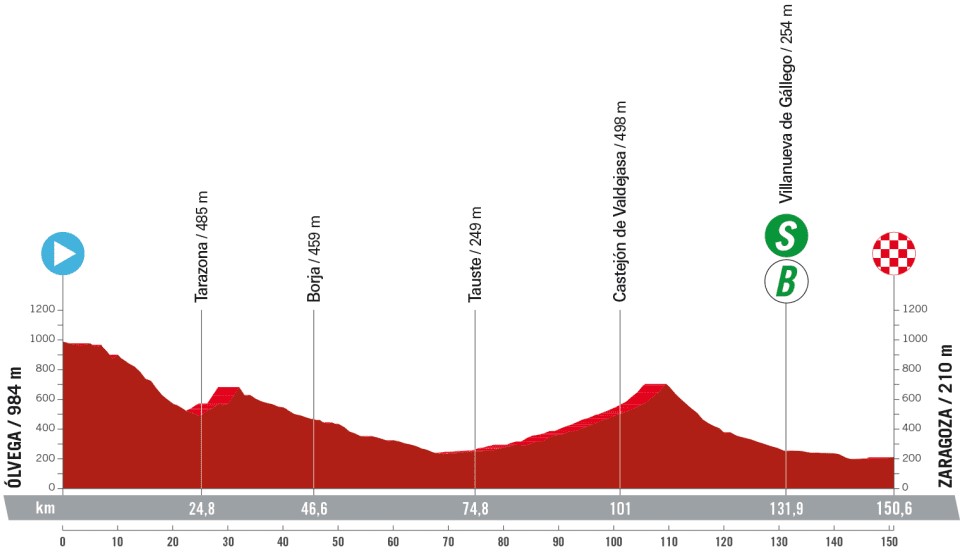
Stage 13: Formigal – Col du Tourmalet, 135km (summit)
A short and explosive stage that takes place almost entirely in France and concludes – after over 4,000m of climbing – on the summit of the Col du Tourmalet (18.9km at 7.4%). The mythical mountain was meant to feature in 2020 but was postponed owing to the Covid-19 pandemic. A short ride up the Spanish side of the Portalet will kick things off ahead of the Col d’Aubisque (16.5km at 7.1%) and Col des Spandelles (10.3km at 8.3%). The etapa reina, surely.
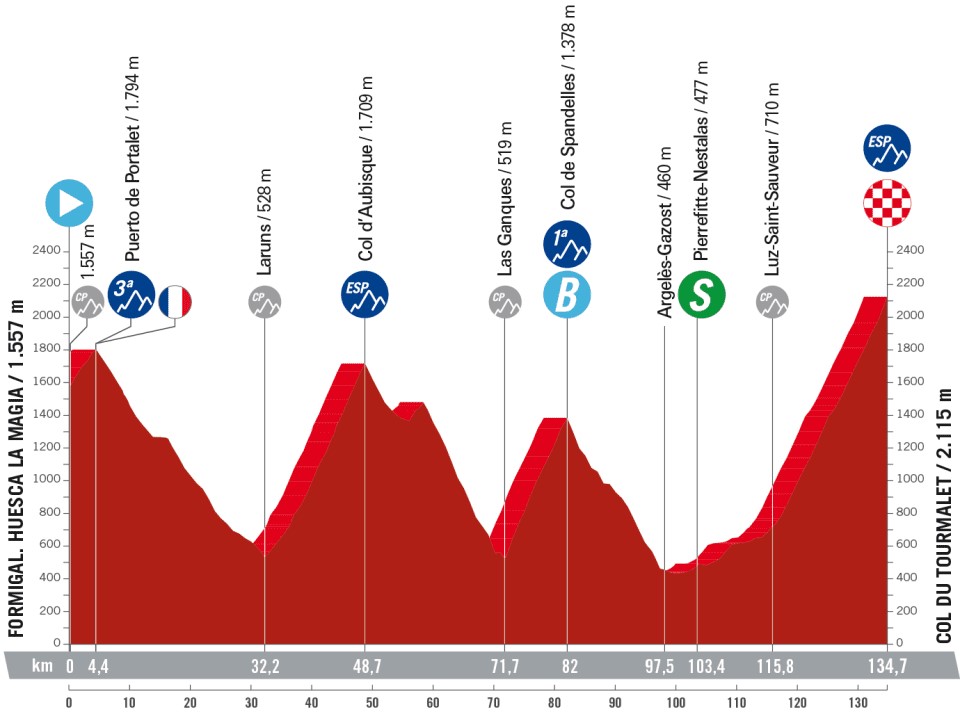
Stage 14: Sauveterre-de-Bearn – Larra-Belagua, 156.5km (summit)
After the trials and tribulations of the Tourmalet comes a day that features two HC climbs ahead of an unprecedented final climb to the finish. After a flat opening 50km, the Col Hourciere (11.1km at 8.7%) is steeper at the start and could do some early damage. The race returns to Spain via the Puerto de Larrau (14.9km at 8%) which, save for a couple of flat sections, is all double digits. The Cat.1 Puerto de Belagua is not particularly steep (6.3%) but the damage could already be done before the 9.5km final ascent.

Stage 15: Pamplona – Lekunberri, 158.5km (hilly)
Undulating roads in the Basque region precede the Cat.3 Puerto de Lizarraga, with its forgiving average gradient of just 2.6% over nearly 20km of rise – much skewered by a long flat section in the middle. The business end of a day for the breakaway hinges on a double ascent of the Cat.2 Puerto de Zuarrate (7.3km at 4.8%), the second summiting of which coming just 8km from the finish at Lekunberri, home of the Navarrese alt-rock power trio Berri Tzarrak, whose songs are sung entirely in Basque and whose drummer shares a surname with the Izagirre brothers.
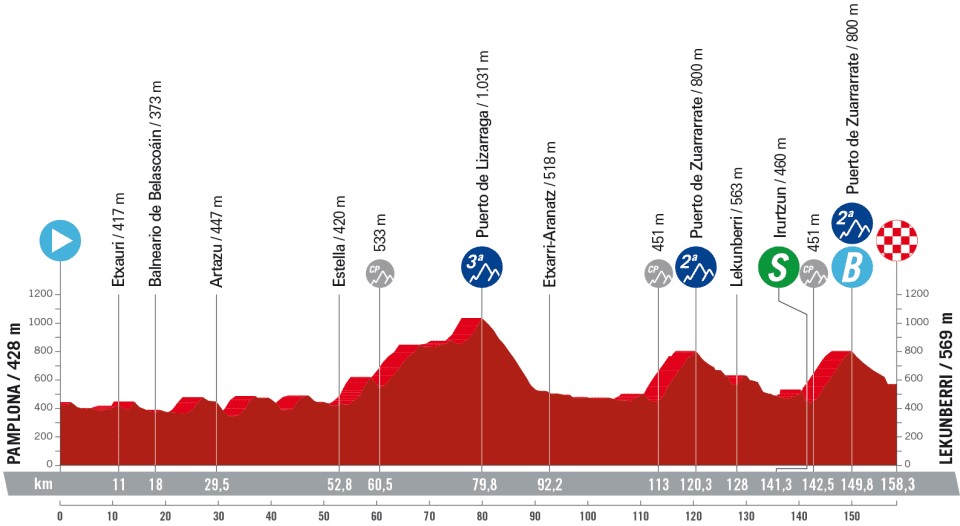
Stage 16: Liencres Playa – Bejes, 120.5km (uphill finish)
The final week of the race gets going with a short and picturesque romp along the Cantabrian coastline which, after numerous lumps and bumps, culminates inland with an explosive climb to Bejes. The Cat.2 ascent is just 4.8km long but includes ramps of up to 15% which should make for a thrilling finale. Anyone with heavy legs after the second rest day could be found out.

Stage 17: Ribadesella – Alto de L’Angliru, 125km (summit)
The mythical Angliru (12.4km at 9.8%) returns for the first time since Britain’s Hugh Carthy gurned and grimaced his way to victory there in 2020. The ninth summit finish on the Alto de L’Angliru in Vuelta history comes at the end of a short and sharp stage that also features two Cat.1 ascents of the Alto de Colladiela (7.8km at 7.1%) and the Alto de Cordal (5.4km at 9.2%). The last 7km of the Angliru hardly drop below 20% with the riders facing the steepest sector of 24% – the aptly named Cueña les Cabres (goat path) – with 3km remaining.
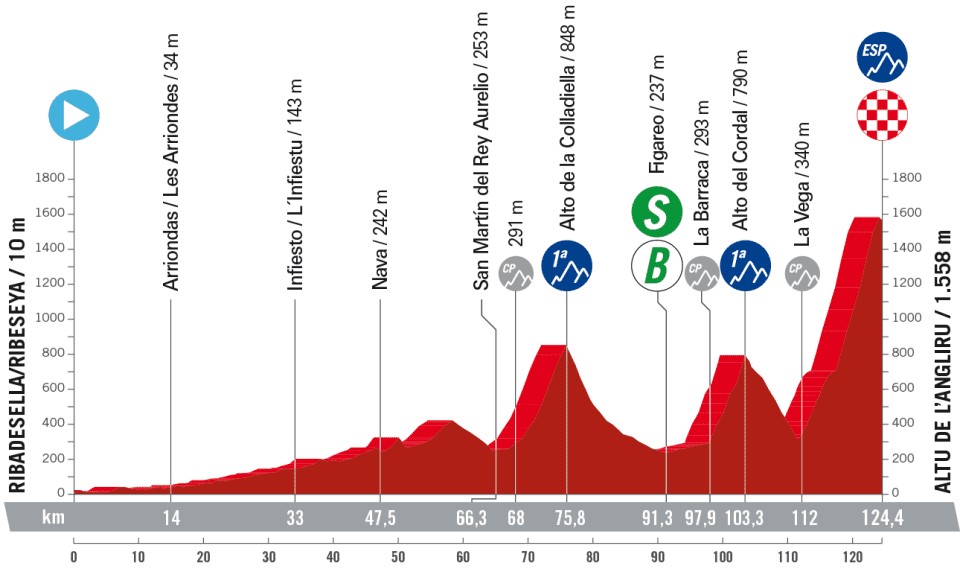
Stage 18: Pola de Allande – La Cruz de Linares,179km (summit)
There’s no let-up in the battle for red with the Angliru followed by a banana-skin of a stage that features five categorised climbs, including a double ascent of a finish climb new to the race. After the Cat.2 Alto de las Estacas (5.1km at 7.5%), Cat.1 Puerto de San Lorenzo (9.9km at 8.6%) and Cat.3 Alto de Tenebredo (3.4km at 9.5%), the riders embark on the 33km finishing circuit that includes back-to-back ascents of the narrow, concrete-slabbed Puerto de la Cruz de Linares (8.3km at 8.6%).

Stage 19: La Baneza – Iscar, 177.5km (flat/sprint)
Before the penultimate day fireworks comes this, an entirely flat ride through the barren Castile and Leon region where the only major obstacle will be potential winds that could cause a little chaos. While it’s hard to see anything beyond a bunch sprint in Iscar, flat stages late in a Grand Tour have a tendency to tear up the rule book – so we can’t discount the possibility of an upset.
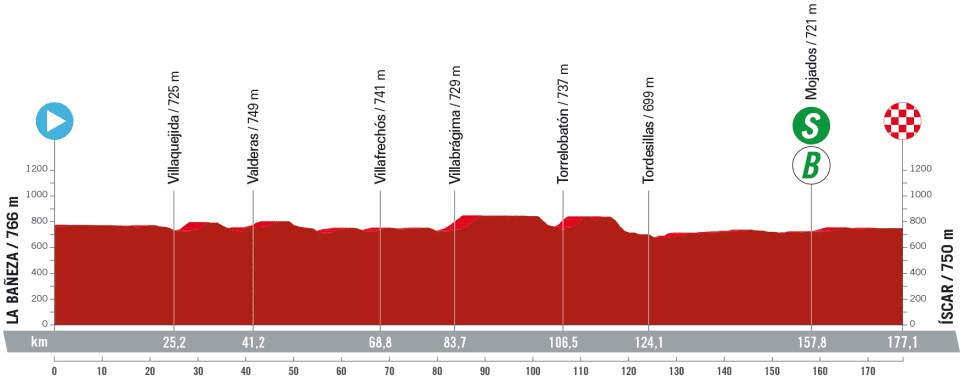
Stage 20: Manzanares El Real – Guadarrama – 208km (hilly)
An intriguing experiment eschews a big mountain showdown at the death for a classics-style stage that boasts a relentless succession of 10 third-category peaks over a leg-sapping 208km parcours that resembles the side of a saw. The fulcrum of the stage is a three-climb circuit tackled twice and bookended by varying ascents up the Puerto de la Cruz Verde. The race then climaxes in Guadarrama via the Alto San Lorenzo de El Escorial (4.6km at 6.6%). It’s anyone’s guess how this one pans out – but the repetitive nature of the climbing at the end of three tough weeks may produce fireworks.
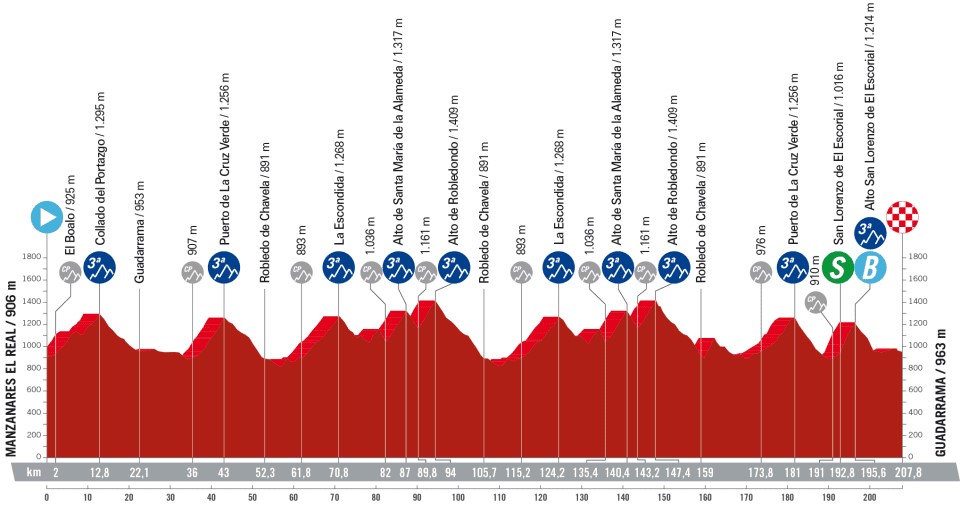
Stage 21: Hipodrome de la Zarzuela – Madrid, 101.5km (flat)
The 78th edition of La Vuelta draws to a close with the now-traditional urban circuit race through the centre of Madrid with the riders tackling 10 laps in the Spanish capital. A sprint and a final rendez-vous for the green jersey protagonists is the likely outcome – along with the crowing of the overall winner.
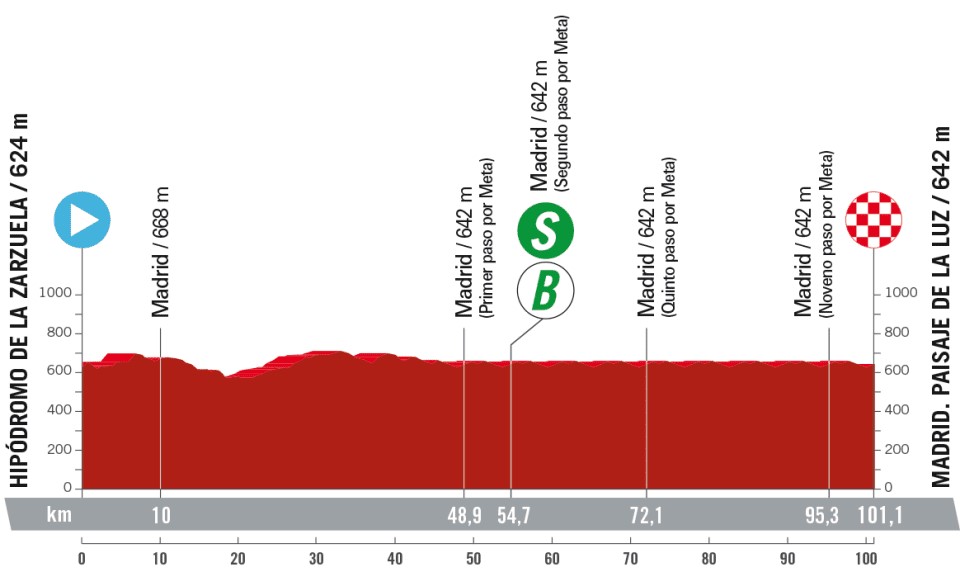
Read the full article Here


